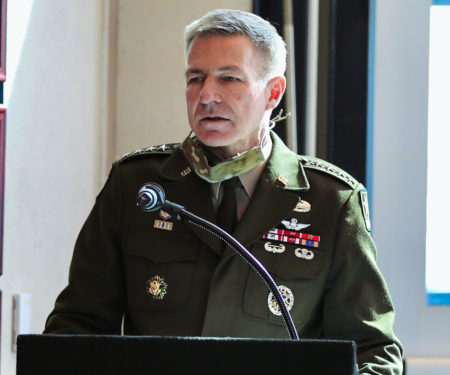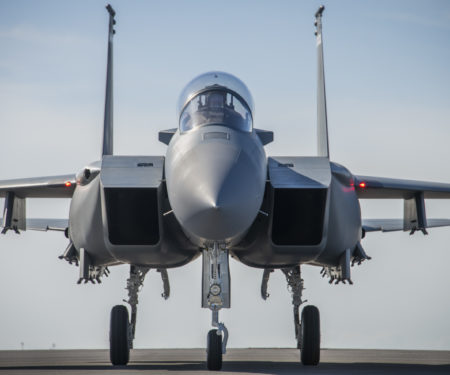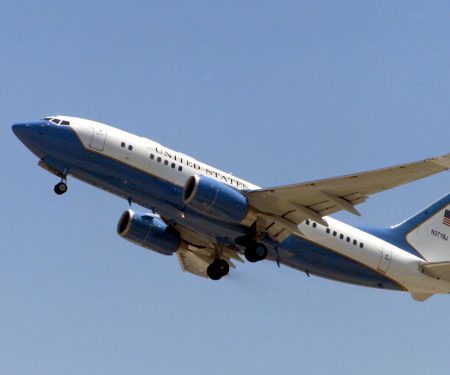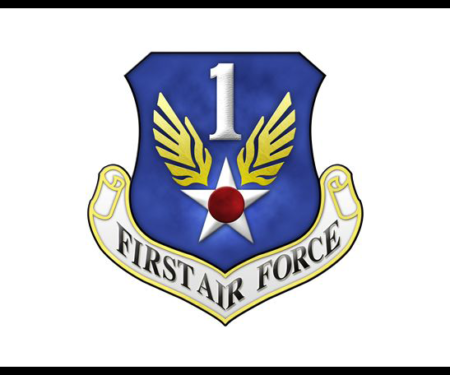Radar Sweep
WATCH: Nuclear Deterrence and Missile Defense Forum: Dr. Mark Schneider
AFA’s Mitchell Institute for Aerospace Studies hosted a live virtual Nuclear Deterrence and Missile Defense Forum event with Mark Schneider, senior analyst at the National Institute for Public Policy. Schneider shared his insights into Russia’s nuclear modernization programs and doctrine, the importance of the U.S. nuclear triad, and considerations for the Biden administration’s approach to nuclear deterrence strategy at a critical time in the relationship between Washington and Moscow.
1 of 3 Surviving Tuskegee Airmen in Arizona Dies at 95
The Archer-Ragsdale Chapter Tuskegee Airmen confirmed in a news release that Robert Ashby died Friday at his home in the Phoenix suburb of Sun City. He was 95. Born in 1926 in Yemassee, South Carolina, Ashby enlisted at age 17 in the Army Air Corps, which later became the U.S. Air Force. After graduating from high school in Jersey City, New Jersey, he was called into active duty. By December 1944, Ashby went to Tuskegee, Alabama, for aviation training. Ashby was sent to Japan, where he was rejected by two all-white flying units due to segregation policies. He served in all-Black units for the next five years.
National Guard Member on DC Security Mission Dies After Medical Emergency
“Joint Task Force District of Columbia is sad to confirm the death of a National Guard member serving with the U.S. Capitol security mission due to an apparent medical emergency,” Lt. Col. Robert Carver, a spokesman for the task force's Joint Information Center, said in the statement. “The individual was not on duty at the time, and the incident is under investigation.”
Securing Information Age Combat Capabilities Demands a New Approach
“Joint all-domain command and control (JADC2) is an imperative for the Air Force and the broader Department of Defense with good reason. Success in tomorrow’s battlespace will rely on the ability to gather data, process it into actionable information, and share this in real time across every element of coalition or joint force operations,” writes Heather Penney, senior resident fellow at AFA’s Mitchell Institute for Aerospace Studies. “The commonly accepted way to achieve this goal is through a concept known as common standards—a standardized technical baseline through which all systems will communicate. But common standards are not the only—or even the best—way to achieve the information sharing fundamental to actualizing JADC2.”
Some Complain After Air Force Base Lifts Travel Restrictions for Vaccinated Personnel Only
The COVID-19 vaccine may not be mandatory for military personnel, but service members and employees at Vandenberg Air Force Base, California, are finding that their freedoms will remain curtailed as long as they aren't vaccinated.
Another Lawsuit Challenges Locating Fighter Jets in Madison
A group that opposes to basing the new F-35 fighter jets at Truax Field in Madison has filed a second lawsuit challenging the military’s environmental review. Safe Skies Clean Water Wisconsin filed the lawsuit Wednesday in federal court alleging the Air Force and National Guard Bureau failed to follow the law when it considered the impacts of its decision to locate the jets at the 115th Fighter Wing. The nonprofit group said the military didn’t adequately consider the impact of noise, air and groundwater pollution that could result from the fleet.
Flat Budget Must Prioritize IT, Air Force Official Says
“While we’re entering that world of flat or declining budget, most likely, we are also entering a world where the entire rest of the commercial world, their IT spending is going [up],” Lauren Knausenberger, the Air Force chief information officer, said March 9 at the AFCEA Rocky Mountain Cyberspace Symposium. “They’re making trades where better operations means fewer people having to fight through manual process[es], and where they’re spending more and more on their digital infrastructure because they know that it’s the foundation for their future competitive advantage. They will not be in business if they don’t make this investment. And we know more and more that we will not be in business if we don’t make this investment.”
109th Airlift Wing Wraps Up Antarctic Research Support
From November through February, the 73 Airmen and three LC-130 Hercules supported the United States Antarctic research efforts as part of Operation Deep Freeze, the Department of Defense’s annual support to the National Science Foundation’s Antarctic program. The Airmen and aircraft were based at the Christchurch International Airport in Christchurch, New Zealand, after completing COVID-19 quarantine requirements for the country of New Zealand. Normally, the 109th AW sends six to seven planes and around 250 Airmen to McMurdo Station during the support season, but this year crews based in New Zealand only flew to the Antarctic to conduct missions as needed to minimize the chance of the coronavirus getting loose in the enclosed environments of Antarctic research stations.
US Air Force is Guarding Against Electromagnetic Pulse Attacks. Should We Worry?
Officials at the Joint Base San Antonio in Lackland, Texas, issued a request for bids to carry out a survey of a facility called the Petroleum, Oil and Lubrication Complex. The survey will identify any equipment that could be vulnerable to an EMP ahead of more detailed vulnerability testing, according to the request. After that, officials would figure out ways to keep that equipment safe in the event of an EMP attack.





